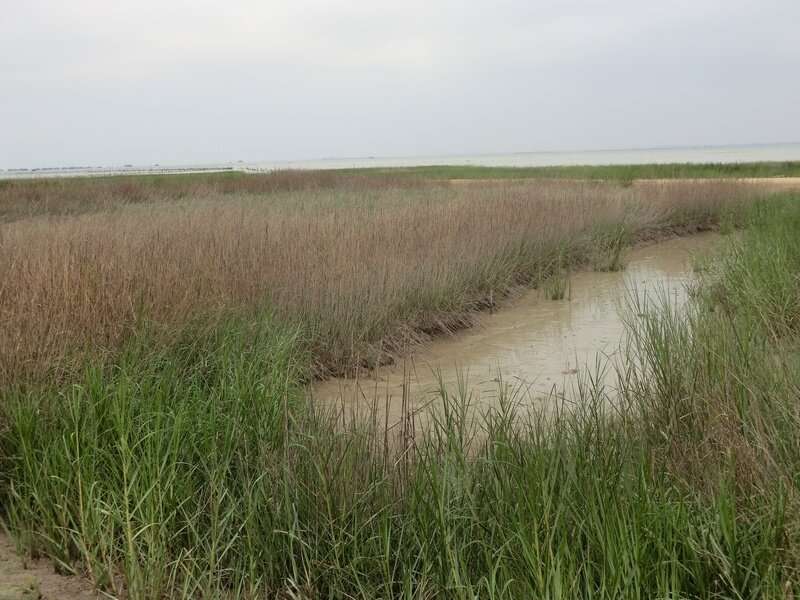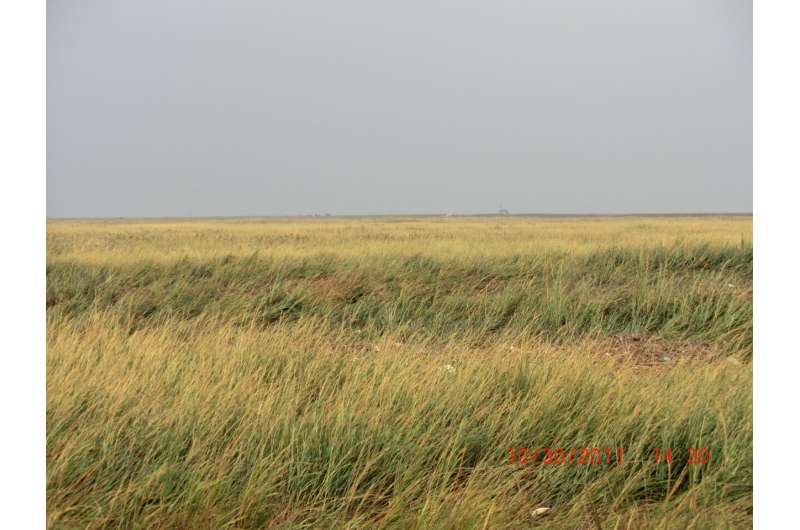Field photos from the Global Geo-Referenced Field Photo Library. Credit: Center for Earth Observation and Modeling at the University of Oklahoma
Coastal wetlands support diverse and vital ecosystems central to coastal areas' biodiversity and economic vitality. However, coastal wetlands are threatened by sea level rise that can lead to flooding and land use changes that alter the way people can live or work in these areas. These impacts are large. Approximately 600 million people live less than 10 meters, approximately 33 feet, above sea level, while 2.4 billion people live within 100 km, or around 60 miles, of the coast.
An international, interdisciplinary research team led by University of Oklahoma professor Xiangming Xiao is using satellite images to measure the changes of coastal wetlands in China from the early 1980s to the present. The research team is also assessing the effects of conservation efforts on preserving and recovering these important ecosystems. Their findings on China's coastal wetlands are now published in the journal, Nature Sustainability.
Xiao is a George Lynn Cross Research Professor in the Department of Microbiology and Plant Biology, Dodge Family College of Arts and Sciences, and the director of the Center for Earth Observation and Modeling at OU. Xinxing Wang, a graduate student at Fudan University in China, is the first author of the paper.
Since the 1980s, the coastal zone of China has experienced increased urbanization, industrialization and population growth, combined with increased sea level rise, that has led to significant decreases of wetland areas.
"Because coastal wetlands provide diverse important ecosystem goods and services, their loss has reduced biodiversity, affecting water quality, carbon storage and coastal protection from storm events and increased regional vulnerability to sea level rise which, together, pose threats to human health and coastal sustainability," Xiao explained.
Field photos from the Global Geo-Referenced Field Photo Library. Credit: Center for Earth Observation and Modeling at the University of Oklahoma
"We wanted to know how these coastal zones have changed over recent decades, which had been very difficult to do," he said. "However, in the past 10 years or so, cloud computing facilities like Google Earth Engine have become available, and a lot of satellite imagery has become freely available, so the technology has come to the point where we can track, at a high spatial resolution, coastal zone changes over time and space."
The researchers analyzed more than 62,000 satellite images of coastal wetlands in China taken between 1984 to 2018. They generated two three-year maps (1985-88 and 1988-91) and 29 annual maps of coastal wetlands for the period 1990 to 2018, for a total of 31 maps. They also identified and mapped three types of coastal wetland areas, tidal flats, saltmarshes and mangroves.
They were interested in seeing whether these images could show the impact of China's development and enforcement of environmental laws and regulations on mitigating the loss of wetland areas. They found that wetland areas significantly decreased during 1984 through 2011. However, following increased conservation and restoration efforts under China's drive for sustainable development and ecological civilization, the outlook improves.
"We found a substantial increase in saltmarsh area and a stable trend of tidal flat areas after 2012, driven by decreased anthropogenic activities (pollution) and increased conservation and restoration efforts," said Xiao.
"To achieve the sustainability of coastal wetlands, China must continue to give top priority to conservation and the restoration of coastal wetlands and their ecosystem services," he added. "Our satellite-based mapping tools and resultant maps of coastal wetlands at high spatial resolution (30-m) are important in assessing, monitoring, reporting and verifying future changes in the coastal wetlands of China and the world."
More information: Xinxin Wang et al, Rebound in China's coastal wetlands following conservation and restoration, Nature Sustainability (2021). DOI: 10.1038/s41893-021-00793-5
Journal information: Nature Sustainability
Provided by University of Oklahoma

























